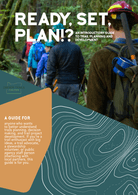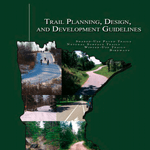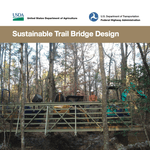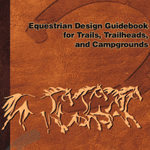Ready, Set, Plan
Trail Competencies
-
Project Planning and Design
- • Conceptual Trail Plan Development
- • Trail Plan Development
- • Implementation Plan
Summary
A guide for anyone who wants to better understand trails planning, decision making, and trail project development. If you’re a trail enthusiast with big ideas, a trail advocate, a stewardship volunteer, or public agency staff person interfacing with local partners, this guide is for you.
Overview
The importance of trails cannot always be measured; their value is deep, varied, and individual. Trails allow us to experience places we hold dear or yearn to explore. The diversity of experiences we come to trails for is vast. Some take to trails to seek solace, comfort, peace, rest, or renewal. Others may find community, adventure, excitement, exploration, or discovery. But whether your trail experience is about going fast, slowing down, pushing personal limits, returning to something familiar, traveling to a destination, or taking an opportunity to meander, with so many different reasons to experience trails, we must ensure that our trails also reflect the diversity of human needs of the people who use them. When our network of trails is successful, it connects the full spectrum of community members to the places they want to be and to their preferred modes of recreation, while also protecting the surrounding ecosystems that make each place so uniquely important.
Despite the deep and varied value of trails to the public, there is not always an established trail plan or mandate to a specific agency to develop and maintain these public assets. Trails often compete for limited resources within public agencies who must consider other land and resource management needs and priorities. In urban and suburban areas, trails can fall into poorly defined territory between transportation agency priorities and parks division assets. For trails that cross the jurisdictions of multiple land owners or management authorities, effective trail management requires successful collaboration.
These realities mean that trail development and stewardship partnerships between management agencies, and between land managers and members of the public who care about trails, are critical. Trails enthusiasts are necessary partners in developing and maintaining a sustainable trails network that ensures access to the outdoors for all.
Trail Types Covered
General. All trail types are relevant.
| Publisher | Oregon Trails Coalition | |
|---|---|---|
| Published | May 2021 | |
| File Format | ||
| File Size | 41.54 MB | |
538 people have viewed this resource





